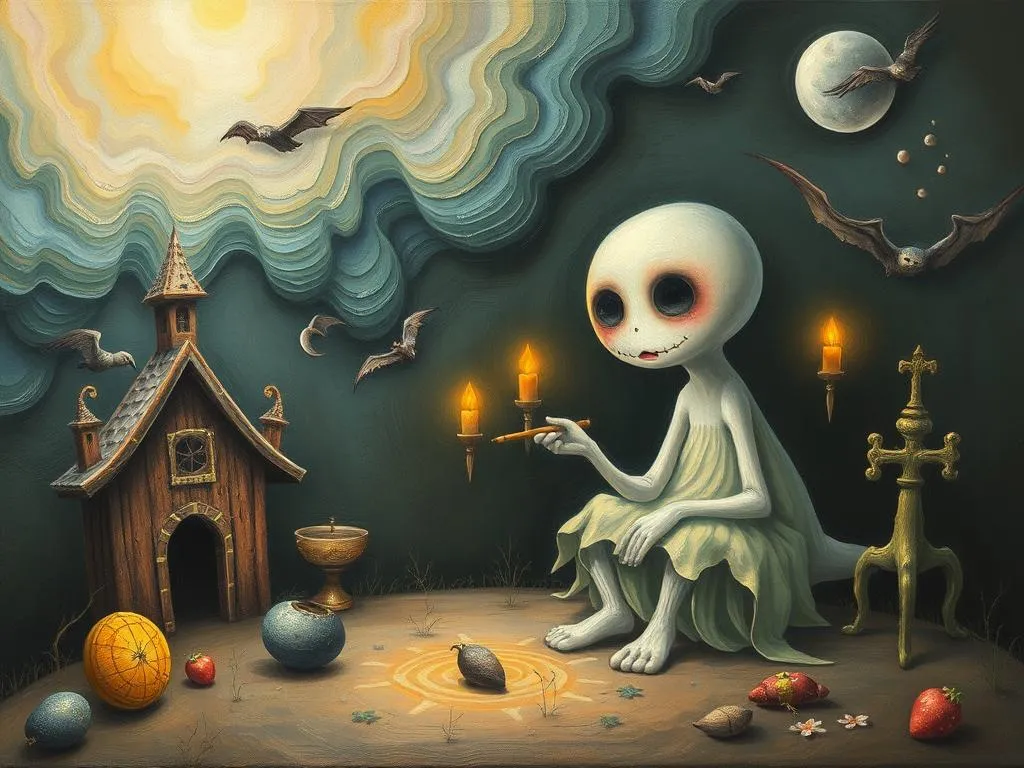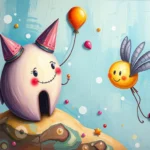
Introduction
Dreams have always held a certain allure for humanity, serving as a gateway into the subconscious mind. Among the myriad of dreams we experience, haunting dreams often stand out due to their unsettling nature. They can leave us feeling disturbed, anxious, or even perplexed upon waking. The relevance of these dreams lies not only in their emotional impact but also in the rich tapestry of symbols that often accompany them. Understanding the symbolism within these dreams can provide profound insights into our waking lives and help us navigate our inner turmoil. The exploration of haunting dream symbols can be a powerful tool for self-discovery and emotional healing.
Symbolism and Meaning
The symbols present in haunting dreams can vary widely, but they often share common themes that resonate deeply with our personal fears and unresolved issues. Darkness, for instance, is a prevalent symbol in many haunting dreams. It often represents the unknown—fears or anxieties that we have not yet faced. In this context, darkness serves as a metaphor for the subconscious mind, where repressed emotions and memories lurk. Encountering darkness in a dream can prompt us to confront what we may be avoiding in our waking lives.
Another common symbol is the presence of a figure or entity that instills fear. This figure can take on various forms—an unknown person, a shadowy silhouette, or even a monstrous creature. The presence of such figures typically symbolizes aspects of our own psyche that we find threatening or disturbing. These figures can represent unresolved conflicts, feelings of inadequacy, or even aspects of ourselves that we have disowned. By recognizing these figures as parts of our own identity, we can begin to integrate these aspects rather than suppress them.
Additionally, chasing or being chased is a frequent scenario in haunting dreams. This dynamic often signifies a struggle with anxiety or stress in waking life. When we find ourselves being pursued in a dream, it may reflect a desire to escape from something—an overwhelming responsibility, a relationship, or even our own emotions. Conversely, if we are the ones doing the chasing, it may indicate an effort to confront or confront something that we have been avoiding. This duality of chase scenarios highlights the complexity of our emotional landscape and the need for balance between avoidance and confrontation.
Key Scenarios and Variations
Haunting dreams can manifest in numerous scenarios, each carrying its own unique interpretation. For instance, a dream in which you find yourself lost in an unfamiliar place often signifies feelings of confusion or disorientation in your waking life. The unfamiliarity of the environment can mirror a sense of being overwhelmed by circumstances or choices. This scenario might also reflect a quest for identity, suggesting that you are searching for direction or purpose in your life.
Another variation involves recurring nightmares, where the same haunting theme reappears over time. These repeated dreams often indicate unresolved issues that demand attention. They serve as a reminder from the subconscious that there are unresolved conflicts or fears that need to be addressed. Exploring the underlying emotions tied to these nightmares can lead to significant breakthroughs in personal growth.
Dreams that involve trapped or confined spaces often evoke feelings of helplessness or entrapment in waking life. This scenario may suggest that you are feeling stuck in a situation or relationship, yearning for freedom or change. Reflecting on what these confined spaces represent in your life can shed light on areas where you might feel restricted or powerless.
Another common haunting scenario is the experience of falling. Falling dreams often symbolize a loss of control or fear of failure. They can reflect anxieties about life transitions or significant changes. The sensation of falling can evoke feelings of vulnerability, prompting you to assess areas in your life where you feel insecure or unsteady.
In contrast, dreams that involve facing your fears can be transformative. These dreams often occur when you are in a process of personal growth or healing. Confronting a haunting figure or scenario can signify your willingness to tackle your fears head-on. Such dreams encourage a proactive stance toward personal challenges, promoting resilience and empowerment.
Real-Life Connections and Takeaways
Connecting haunting dreams to real-life situations can be a powerful exercise in self-reflection. When you experience a haunting dream, take a moment to analyze its elements and consider how they correlate with your waking life. Ask yourself what emotions the dream evoked and whether any specific symbols resonate with your current experiences. This introspective approach can help you uncover hidden fears or unresolved issues that may be influencing your daily life.
Practical advice for processing these dreams includes maintaining a dream journal. Recording your dreams soon after waking can help you capture their vivid details and emotions. Over time, patterns may emerge that provide deeper insights into your subconscious mind. Reflecting on recurring symbols or themes can guide you toward understanding the root causes of your anxiety or fears.
Additionally, consider engaging in mindfulness practices, such as meditation or deep-breathing exercises, to create a sense of calm. These practices can help alleviate the anxiety that often accompanies haunting dreams, allowing you to approach your emotions with greater clarity and acceptance. By fostering a sense of inner peace, you may find it easier to confront the issues that haunt you.
Another effective strategy is to visualize confronting the haunting elements of your dreams while awake. This technique involves imagining yourself in the dream scenario, but this time, you approach the fear with confidence and resolve. This rehearsal can shift your perspective and empower you to face your fears in waking life.
Ultimately, the key takeaway is to view haunting dreams not merely as unsettling experiences but as opportunities for growth and self-exploration. By embracing the symbolism within your dreams, you can gain valuable insights into your emotional landscape and foster a deeper understanding of yourself. Reflecting on these dreams can lead to transformative changes, guiding you toward a more fulfilling and authentic life.
Conclusion
In conclusion, haunting dreams serve as profound messages from our subconscious, rich with symbolism and meaning. By exploring common symbols and scenarios, we can uncover valuable insights into our fears, anxieties, and unresolved issues. The journey of understanding these dreams is deeply personal, inviting us to engage in self-reflection and emotional healing. As we navigate the complexities of our inner worlds, we can transform haunting dreams into catalysts for growth, empowering us to confront our fears and embrace our true selves. Remember, each haunting dream is not just a fleeting nighttime experience; it is an invitation to delve deeper into the mysteries of our psyche and emerge stronger on the other side.







